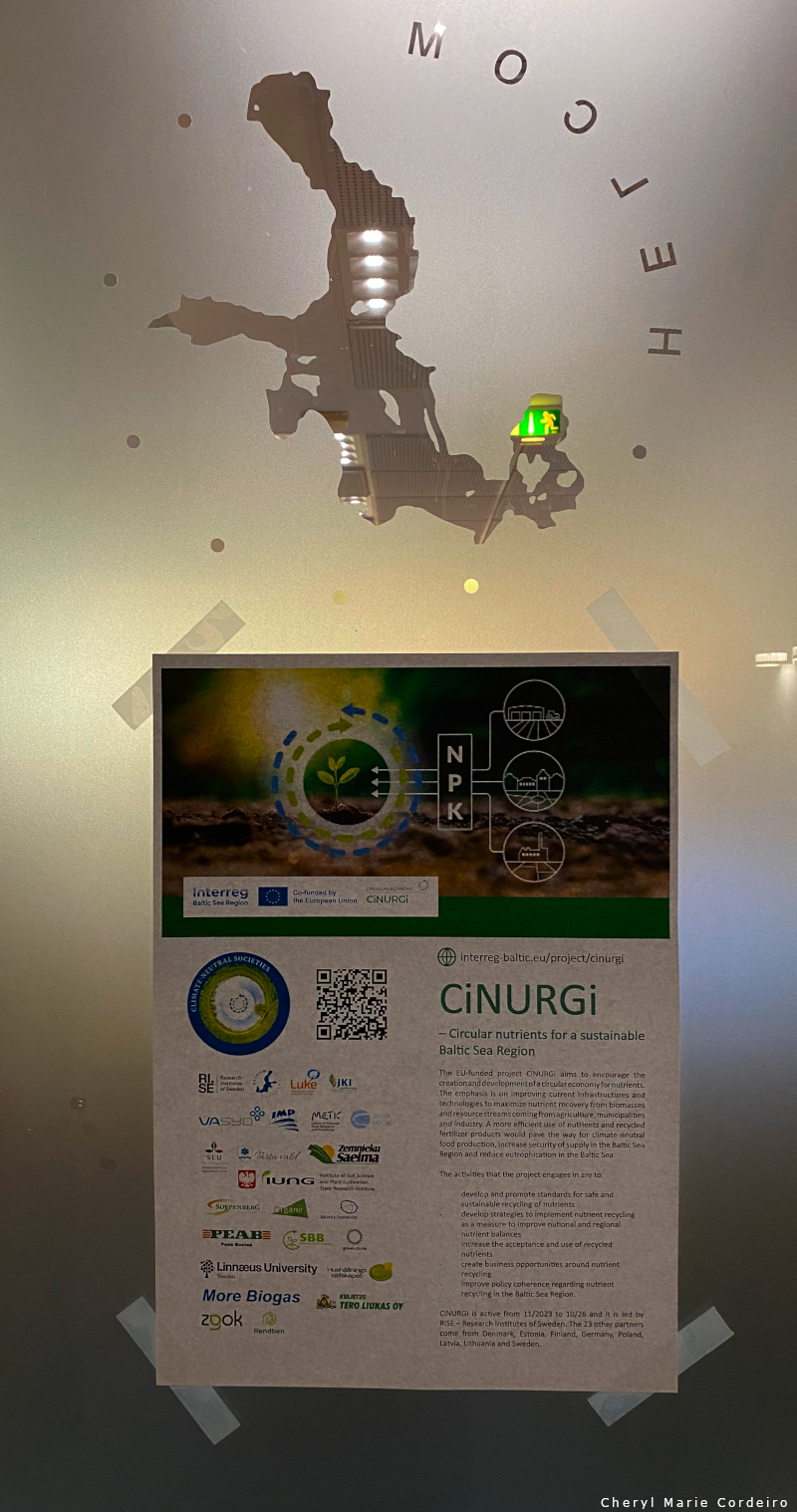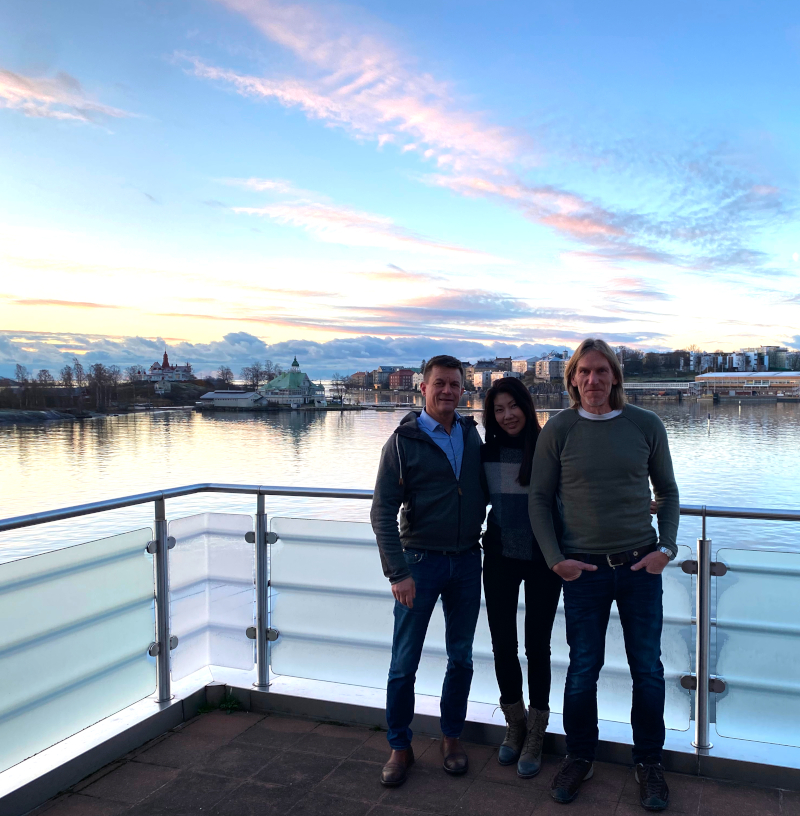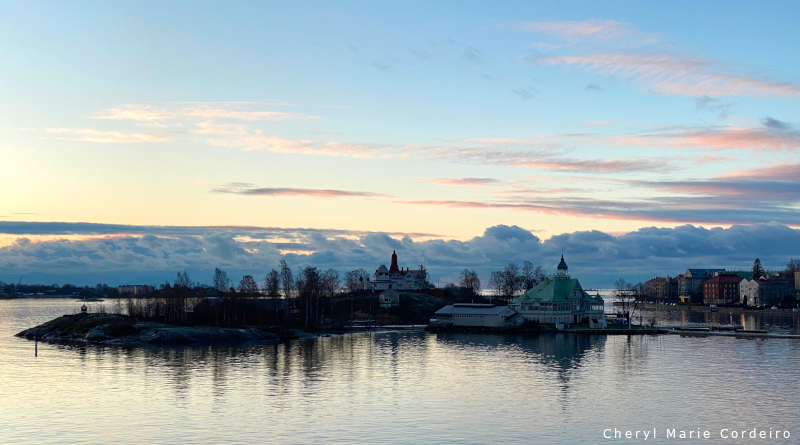
A screencapture from LinkedIn from the EU Interreg BSR core project CiNURGi open webinar held on 18 Nov. 2024. 60 participants signed up for this event.
Text & Photo © CM Cordeiro & , E Sindhöj 2024
The recent CiNURGi open seminar at HELCOM – Baltic Marine Environment Protection Commission, held on 18 November 2024, was a focal point for advancing nutrient cycling and resource recovery in the Baltic Sea Region. Part of a broader project meeting spanning three days in Helsinki, the event featured expert discussions, pilot project updates, and an insightful field study visit to Helsinki Region Environmental Services (HSY). Together, these activities showcased innovative approaches to sustainable waste and nutrient management.
Advancing Pilot Projects for Nutrient Utilization
During the seminar, CiNURGi leaders Erik Sindhöj and Cheryl Marie Cordeiro presented updates on pilot projects that address pressing challenges in biogas and nutrient utilization. These include advanced technologies for improving nutrient efficiency in digestate application, such as acidification techniques and weather-adaptive irrigation systems. The team also highlighted progress in urine separation and drying systems, which are currently being tested in Stockholm housing associations and the sports arena in Uppsala.
Field Visit to HSY
A significant highlight of the CiNURGi project meeting was the field study visit to HSY, Helsinki Region Environmental Services, Finland’s leading environmental services organization. HSY serves over 1.1 million residents in Helsinki, Espoo, and Kauniainen, managing water, wastewater, and waste systems. Their operations include two wastewater treatment plants and an advanced waste management network featuring Sortti Stations, where household waste is sorted and collected for recycling.
HSY’s biogas production and biochar initiatives are noteworthy. Biowaste collected from the metropolitan area undergoes dry digestion to produce biogas, which powers HSY facilities and contributes excess energy to the grid. The digestate is composted into high-quality fertilizer products. Additionally, HSY is pioneering pyrolysis technology to convert sewage sludge into biochar, a nutrient-rich material for agriculture and stormwater filtration. However, regulatory challenges, such as the classification of pyrolysis plants as waste incineration facilities, continue to hinder scalability.
The visit underscored Finland’s national recycling goal of 55% by 2035, up from the current 40%, and the importance of public education and incentives in achieving this target. HSY’s initiatives demonstrate how localized, innovative solutions can contribute to meeting environmental and recycling goals while addressing global sustainability challenges.
Scalability and Regulatory Challenges
Throughout the project meeting, participants explored the potential of scaling solutions like pyrolysis for biochar production and biogas refinement. Discussions highlighted the economic and regulatory hurdles, including the need for streamlined permits and cost-effective technologies to ensure broader adoption.
Innovative Applications for Nutrient Recovery
CiNURGi participants delved into new applications for nutrient recovery, such as extracting fatty acids from biogas processes for use in the chemical industry and converting carbon dioxide from biogas into sustainable proteins and fats using algae and insects. These innovations not only address environmental concerns but also present economic opportunities for integrating waste streams into circular economy models.
Collaboration and Policy Integration
The seminar and the broader CiNURGi meeting emphasized the importance of cross-sector collaboration and policy alignment. Workshops with stakeholders were proposed to establish guidelines for recycled nutrient fertilizers, while HELCOM’s expertise was leveraged to align outputs with regional environmental priorities. Public education campaigns and financial incentives were also discussed as critical drivers for improving bio waste collection and recycling.
Looking Ahead
The CiNURGi team plans to continue these discussions and explore scalable solutions in an international workshop scheduled for October 2025, hosted by SLU in Uppsala. This event will bring together key stakeholders to refine guidelines and foster practical applications for nutrient cycling.
Acknowledgments
CiNURGi extends its heartfelt thanks to HELCOM – Baltic Marine Environment Protection Commission for organizing and hosting this event. HELCOM’s support and expertise were instrumental in creating a platform for meaningful discussions and collaborative exploration of nutrient cycling solutions. Their efforts underscore the importance of regional partnerships in addressing environmental challenges and advancing sustainability initiatives in the Baltic Sea Region.
Conclusion
The CiNURGi seminar, combined with the HSY field visit, showcased practical, scalable solutions for sustainable resource management in the Baltic Sea Region. HSY’s advanced waste management practices, from biogas production to biochar innovation, offer valuable insights into overcoming operational and regulatory challenges. By integrating data-driven approaches, collaboration, and policy alignment, CiNURGi and its partners are paving the way for impactful advancements in nutrient cycling and resource recovery.



